Scotland’s Glowing Saint: The Mystery of St. Fillan’s Radiant Arm
For many, the name ‘Munster’ conjures up a picture of a friendly family of Transylvanian-American Monsters. The family, however, shares its name with a region of Southwest Ireland, renowned for its breathtaking beauty, history and culture. Munster was also the birthplace of a remarkable monk, Fillan (or Faelan) the son of the Irish princess, Kentigerna, who travelled with her and his Uncle Comgan to Scotland in the 8th century. All three were later canonised for miracles attributed to them.
Fillan Brings God to Scotland
During his tenure in Scotland, St Fillan seems to have been an industrious fellow, setting up a mill and a market in the village of Killin, Perthshire. Killin is renowned for its folklore, where evil water horses and water bulls allegedly used their mystical powers to harm children and adults. There are mischievous evil faeries, water spirits, and banshees who announce with their ear-splitting screams, the impending death of those who hear them, and a host of seers, witches and others endowed with supernatural gifts. Fillan must have had his work cut out, spreading the word of God amongst such a pagan society.
Fillan’s Healing Stones
St Fillan is commemorated by the Roman Catholic Church, for his ability to cure those suffering from mental illness. For many years, the remains of a woollen mill in the village of Killin retained a set of eight river stones, said to have been imbued by St Fillan with healing powers. Each of the stones had individual attributes to heal specific ailments and were moved around the afflicted parts of the sufferer’s body, apparently curing the illness. These stones can be seen today at The Old Mill in Killin, now a makers’ market and heritage centre which performs an annual ceremony dedicated to cleaning and re-bedding them.
St Fillan’s Cave Dwelling in Pittenweem
It was on a visit to the beautiful town of Pittenweem in my home county of Fife that I first became aware of St Fillan. I was researching the history of witch persecution which took place in the eighteenth century in Pittenweem for my latest children’s book, PJ and the Paranormal Pursuers, The Phantoms of Pittenweem. We had wandered up to the High Street via Cove Wynd when we happened upon the gated entrance to a natural underground cave, set into the rock next to the mediaeval wall of Pittenweem Priory and bordered by houses. A notice on the door announced that we could enter ‘St Fillan’s’ cave by retrieving the key from a café and chocolate shop on the High Street. It didn’t take much persuasion for us to head on up to The Cocoa Tree for a quick lunch, including, of course, a sample of the chocolates before asking for the key to the cave.
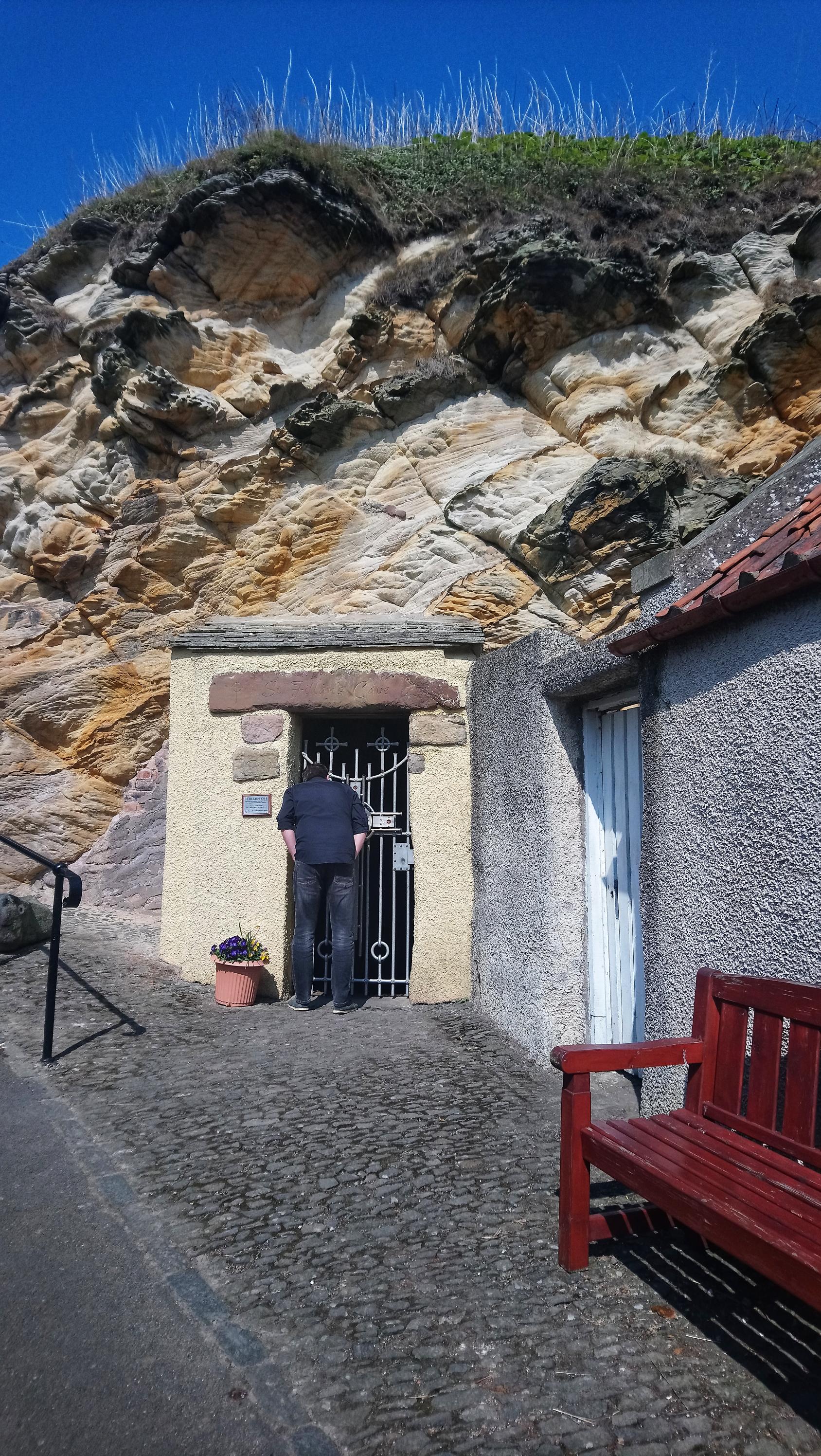
The gate to St Fillan's Cave is set into the rock on Cove Wynd, Pittenweem
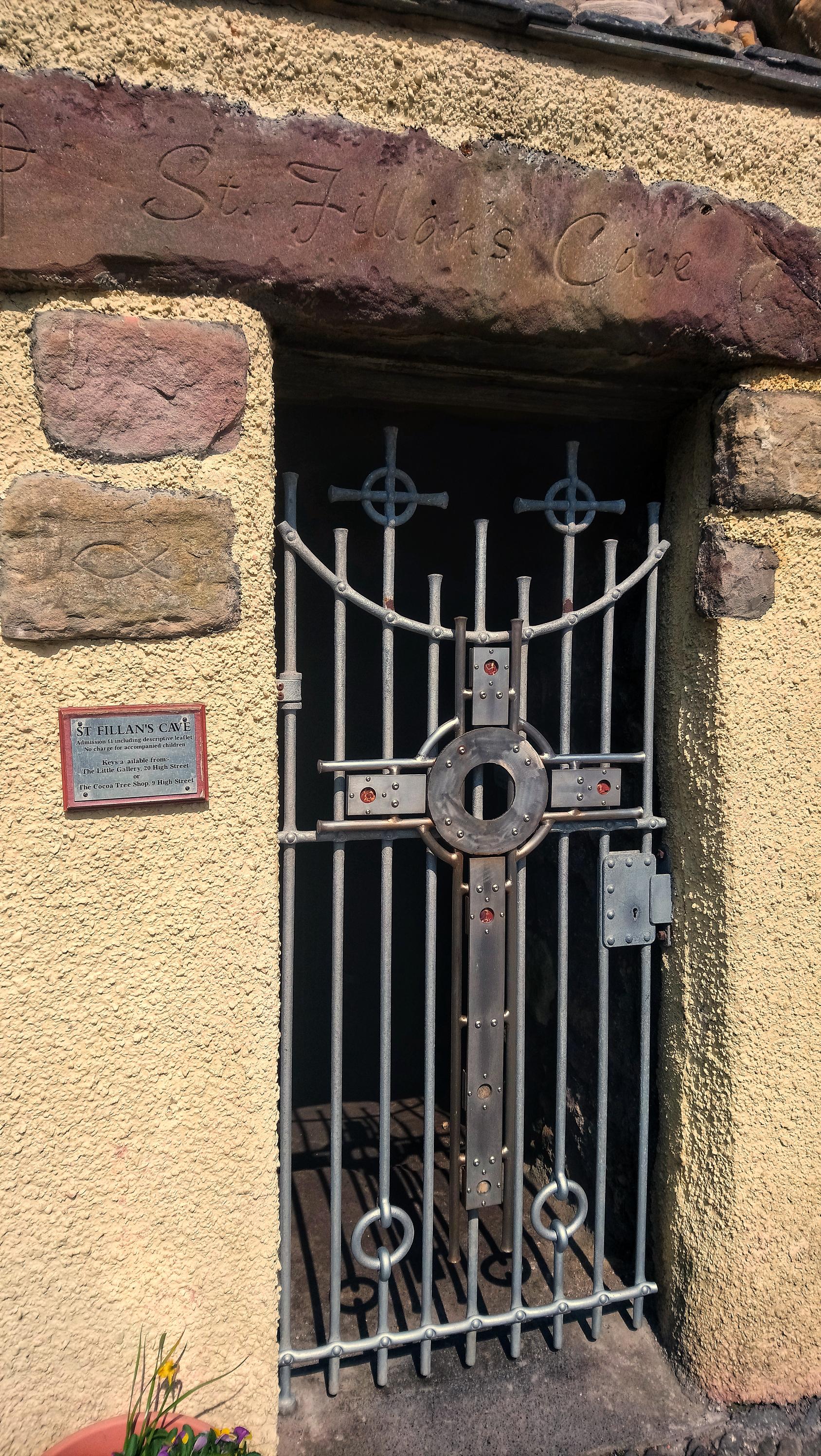
The Gate Leading to St Fillan's Cave Where Those Accused of Witchcraft Were Imprisoned
Suffice to say, the Cocoa Tree gave me the idea of the Mocha Café, haunted by Patrick Morton, the real boy who was the catalyst for the witch trials after he accused innocent people of witchcraft in the town. PJ and his chums stay at the café and guest house and find themselves at the centre of a new investigation. PJ also discovers St Fillan’s Cave, where those accused of witchcraft in the town had been imprisoned, and has a spooky encounter with the saint.
St Fillan Heals Mental Health Patients
‘Pittenweem,’ is a Gaelic name, meaning, ‘place of the cave.’ The gated entrance to the cave is ornate and the doorway, plus a window was originally cut into the rock in the 17th century. The cave itself leads to the harbour and there is a path leading down to the Y-shaped interior which boasts its own altar where even today, Church services are held. According to legend, St Fillan tarried a while in Pittenweem, setting up home inside the cave where there is a holy well dedicated to the saint, which is rumoured to have healing properties. Stories abound about St Fillan’s healing powers, and it was said that those suffering from mental illnesses were bound up with rope and left in the cave overnight. If their bindings were loosened by the next morning, it was believed the patients had been cured of their illness by St Fillan.
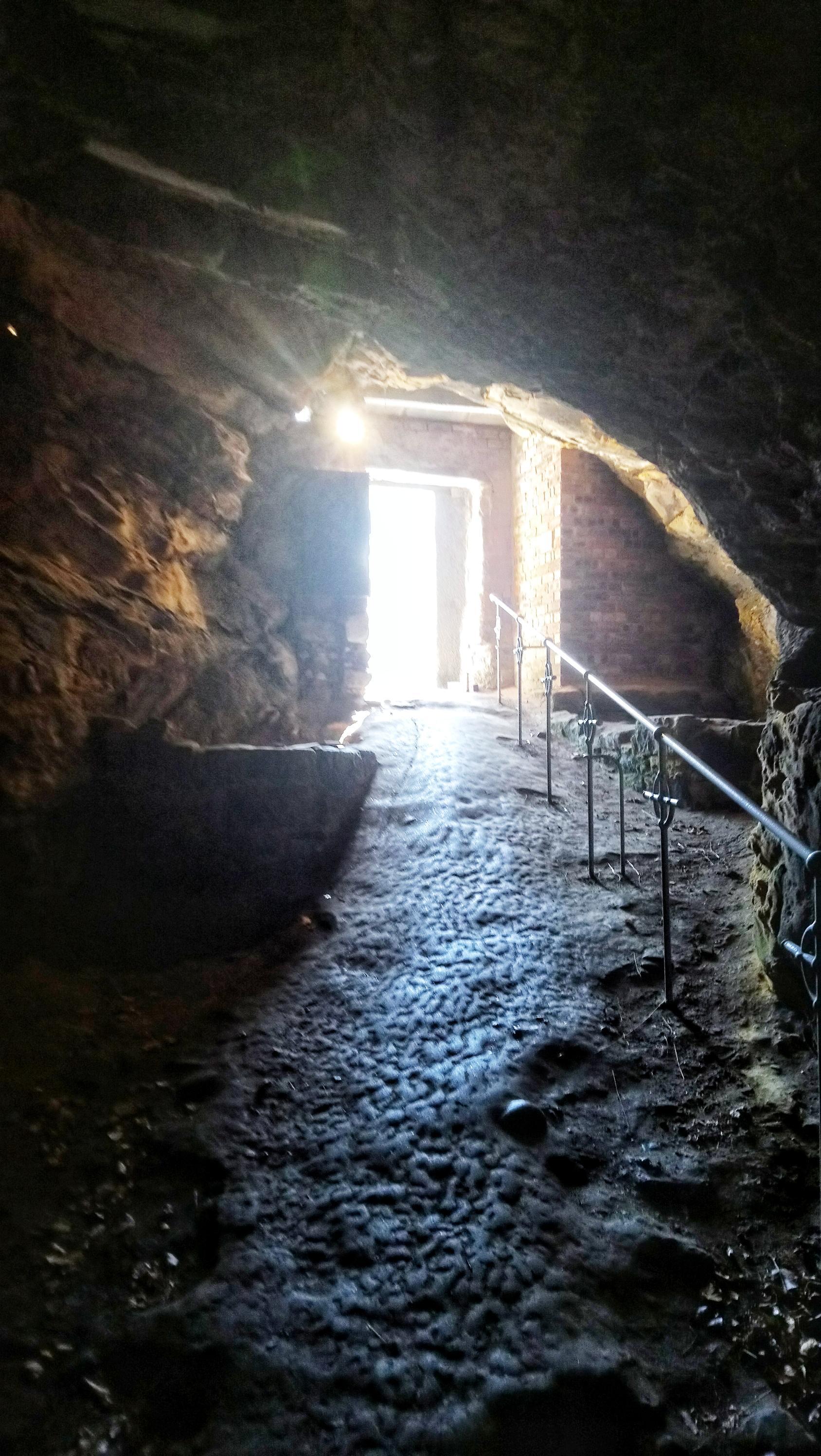 | 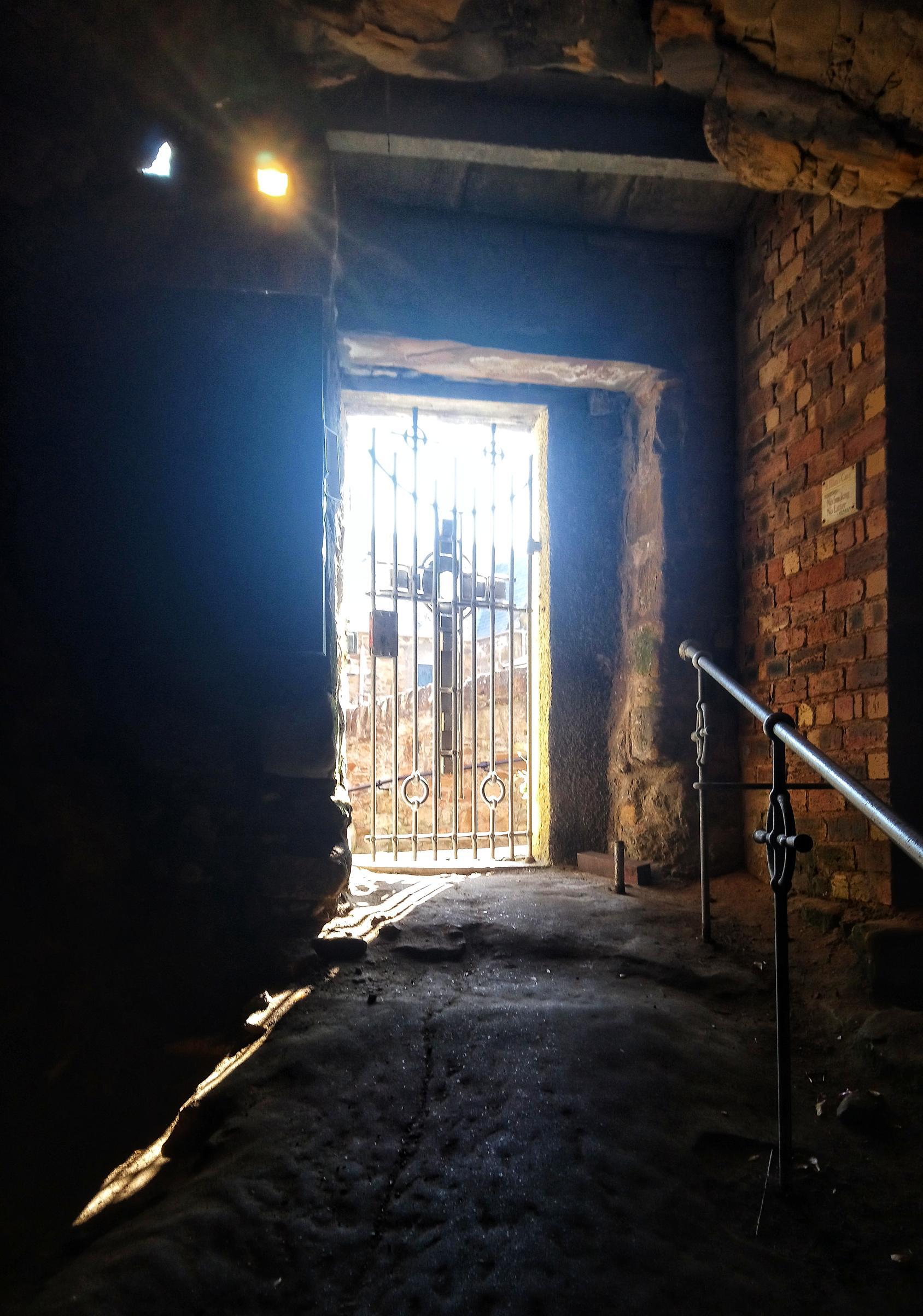 | 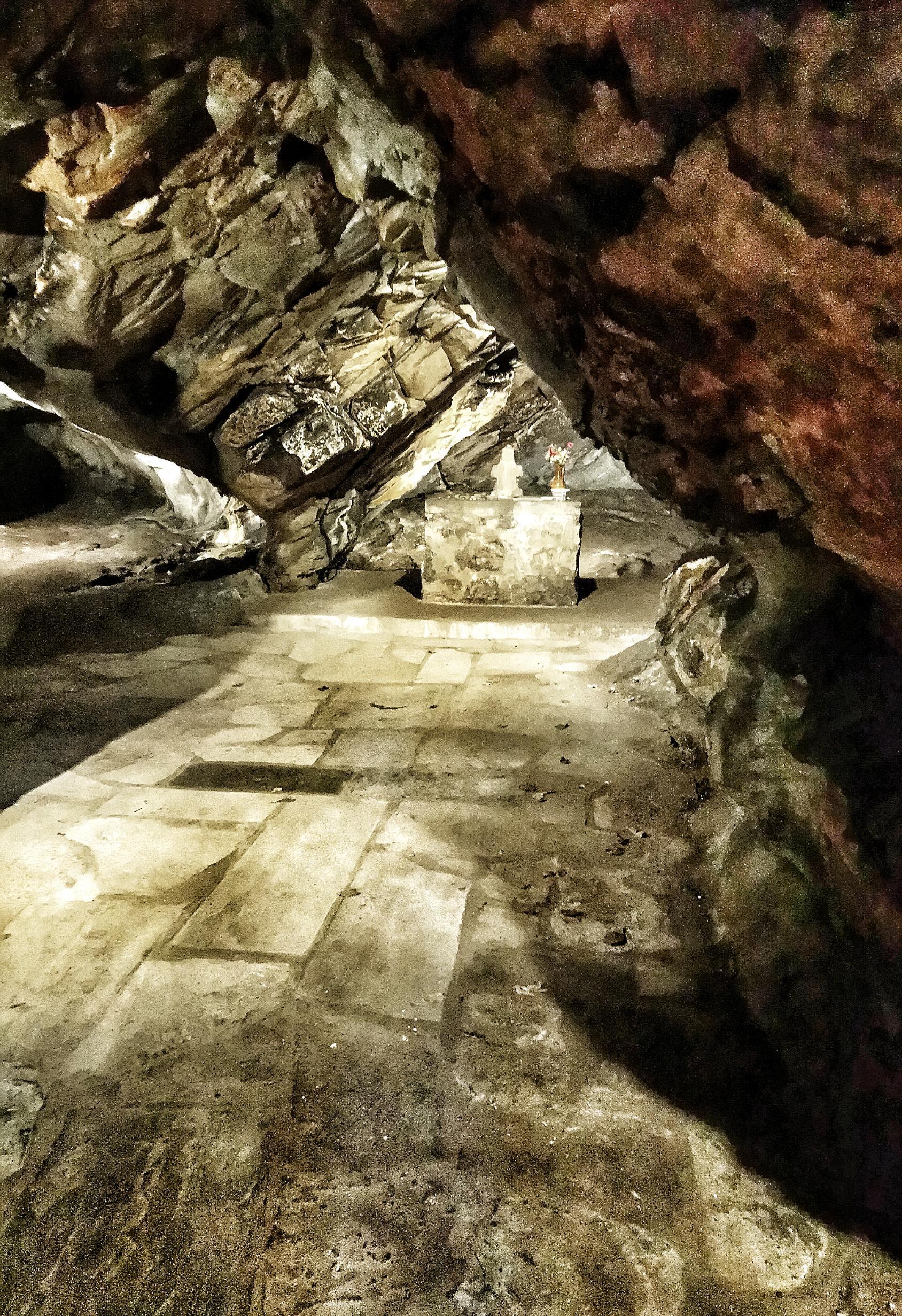 | 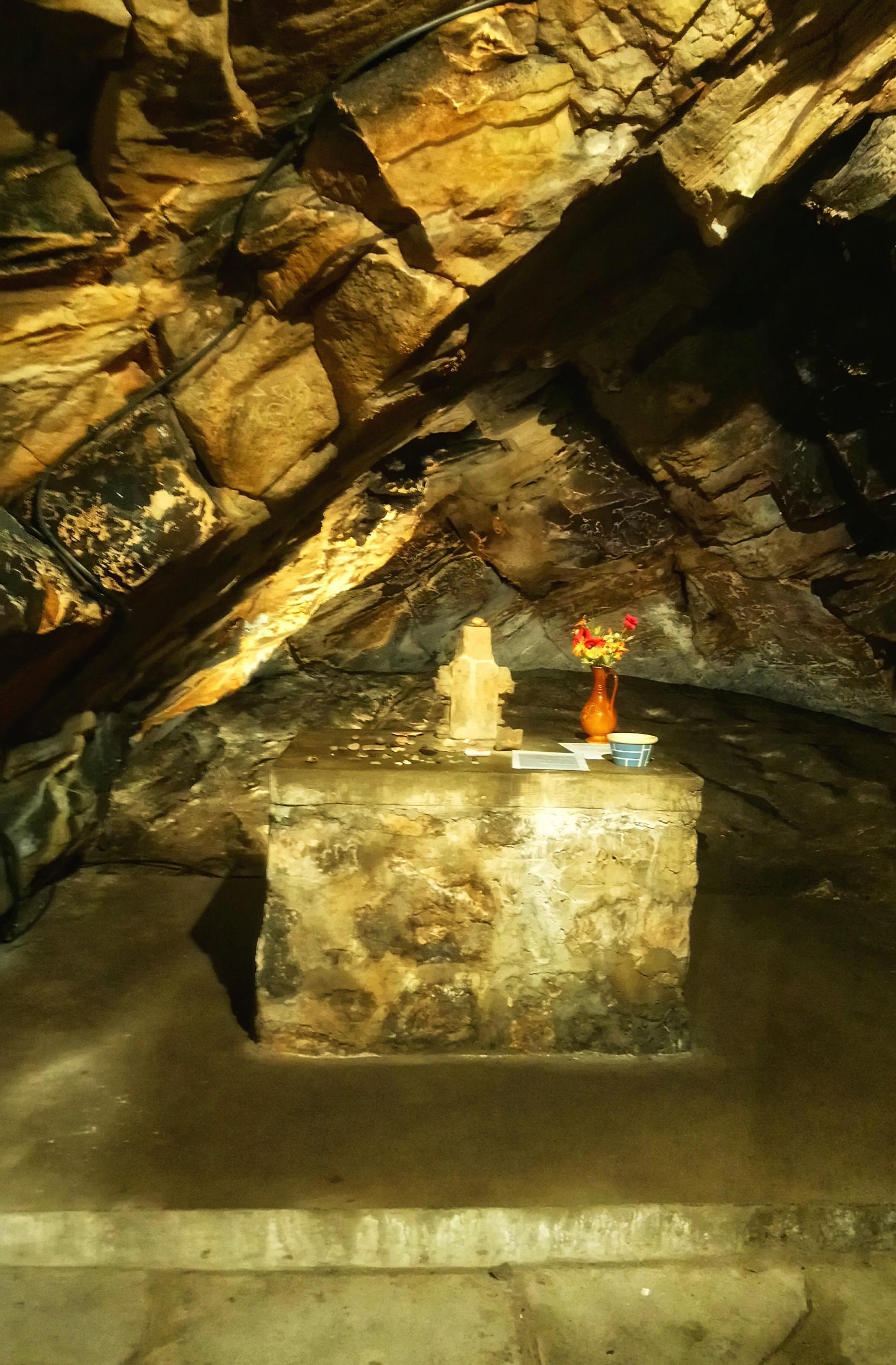 |
Views inside St Fillan's Cave - Path Leading to the Gate and The Altar.
A Light in the Darkness

St Fillan Writing his Scriptures by the Light of His Luminous Arm (Photo created by author with Canva)
Perhaps the most remarkable story about St Fillan, who allegedly lived in the cave for several years, is that he spent his time there, writing his sermons by the light of his luminous left arm. Luminous arm? Say what? OK, taken at face value, there are many such strange tales whereby those destined for sainthood have some odd superpower bestowed upon them. One might not think that this was very much more than that. Just another tale passed down through the ages to enhance the superhumanity of a religious icon.
However, there is a story relating to the American Civil War that may suggest a scientific explanation for an otherwise rather far-fetched myth.
Angel’s Glow – Fact or Fiction?
‘Angel’s Glow’ was the name given to a phenomenon discovered during the Battle of Shiloh in 1862 when soldiers, who had lain in the mud of the battlefield during a couple of rainy days exhibited wounds which glowed in the dark. These soldiers not only survived the inclement weather but found their injuries healed better than those of their non illuminated colleagues.
In 2001, a couple of seventeen-year-old American High School students, Bill Martin, a Civil War enthusiast, and his friend, Jonathan Curtis, decided to look into the legend that Angels had saved some of the wounded. Bill’s mother, Phyllis was a microbiologist who, coincidentally (some might say synchronistically) was researching Photorhabdus Luminescence, a soil bacterium which lives in microscopic parasitic worms and nematodes in plant and soil, and which is capable of producing its own light. When exposed to cool, moist environments these produce a blue or green glow.
It struck the boys that there might be a connection between what happened to the soldiers on the battlefield and the presence of Photorhabdus Luminescence, which caused their wounds to glow. They concluded that the soldiers, who were undoubtedly so cold they had developed hypothermia, and had open, bleeding wounds, had created the perfect conditions for growing the bioluminescent bacteria which destroyed any life-threatening bacteria present in their bodies. The worms and nematodes, attracted to the light of the bad bacteria, dispense their own bacteria to destroy competing micro-organisms in the environment, so killing harmful substances.
While it seems the odds of creating the perfect conditions in humans for such an event to occur appear low, the likelihood of hypothermia in the soldiers could explain the phenomenon noted on the battlefield. Whilst impossible to prove, the research gained the two students first place at the Intel International Science and Engineering Fair.
Could this have explained the tales of St Fillan’s glowing arm, perhaps? While there is nothing specific about him sustaining injury to his luminous limb, it is surely possible that if he had done so, the conditions in a cold, damp cave nestled in an often-chilly East Neuk of Scotland, might also have created in him, the right conditions to become a literal luminary!
St Fillan’s Arm comes in handy for Bruce’s Army!
Whatever the truth of the story, it was later rumoured that the arm of St Fillan came in very handy for Robert the Bruce’s army (see what I did there!) at the Battle of Bannockburn. The Abbot of Inchaffray, who possessed the relic, agreed to Robert Bruce’s request to bring it to the battle site and, as they prayed over it, a noise came from the reliquary which inexplicably opened, spilling the bone out in front of them. Bruce succeeded in battle the next day and in gratitude, established a new priory dedicated to St Fillan.